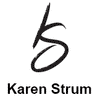When I first painted The Mad Tea Party, I wasn’t just thinking about teacups and talking rabbits—I was thinking about human behavior, respect, and that strange, shimmering line between nonsense and meaning. Lewis Carroll’s famous scene from Alice’s Adventures in Wonderland has always fascinated me. Not just for its absurdity, but for the way it mirrors real conversations we’ve all endured: the kind where no one listens, rules make no sense, and the only sane option is to get up and leave.
This, to me, is not just children’s fantasy. It’s philosophy in disguise. It’s a lesson in self-worth, communication, and courage.
---
Take One: History and Nonsense

First published in 1865, Carroll’s book began under the title Alice’s Adventures Under Ground. Its sequel, Through the Looking-Glass, was once banned in parts of China because animals were shown speaking like humans. The governor of Hunan Province declared that animals should not be seen as equals to people—even in fiction. Imagine that! A rabbit with a pocket watch, deemed too dangerous.
That kind of control over stories, symbols, and speech has been happening for centuries. When we censor, it’s rarely about protection—it’s usually about power. After all, if nonsense can get banned, what does that say about truth?
---
Take Two: Alice Walks Away

The Tea Party itself is delightfully awkward. Alice sits with the Mad Hatter, the March Hare, and a Dormouse who serves as both guest and armrest. She’s interrupted, mocked, and tossed riddles with no answers. And then she does something radical: she leaves. She calls it “the stupidest tea party” she’s ever been to and simply walks away.
That’s strength. That’s clarity. And it’s exactly what I wanted to capture in my own illustration of the Mad Tea Party. Swirling henna-inspired designs dance across the scene, mingling with my watercolor washes. I used black outlines for structure and playful details for whimsy—but beneath the surface, I wanted to ask:
How do we deal with nonsense?
What do we tolerate in conversation?
And when do we say, “enough”?
Walking away from disrespect isn’t weakness. It’s power.
---
Take Three: Artists, Arguments, and Adaptations

The first illustrations of Alice were drawn by Sir John Tenniel, who both collaborated and clashed with Carroll. His engravings shaped how we all imagine Wonderland. Later, Arthur Rackham reinterpreted the story in a darker, dreamier style, sparking controversy for straying from Tenniel’s vision. Even Disney struggled: the 1951 animated film bounced through multiple rewrites until Mary Blair’s bold concept art brought the chaos to life.
And then there’s me—revisiting the scene with ink, watercolor, and a henna-art flourish. The fact that artists keep returning to this strange tea table proves its philosophical staying power. It’s not just a riddle without an answer—it’s a mirror for the messy, noisy rooms we’ve all been in.
---
Why It Matters
At first glance, The Mad Tea Party looks like nonsense. But look closer: it’s about respect, curiosity, and choice. You don’t have to stay at the table if no one’s listening.
That’s why I paint. To remind myself—and anyone else who needs it—that art and literature aren’t just decorations. They’re conversations. Sometimes chaotic, sometimes absurd, but always capable of revealing truth.
So if you’re curious, step into Wonderland with me. See my watercolor of The Mad Tea Party, or explore my collection of Defiant Women—characters who, like Alice, know when to speak up, and when to walk away.
Because at the end of the day, we’re all just trying to make sense of the ride.
